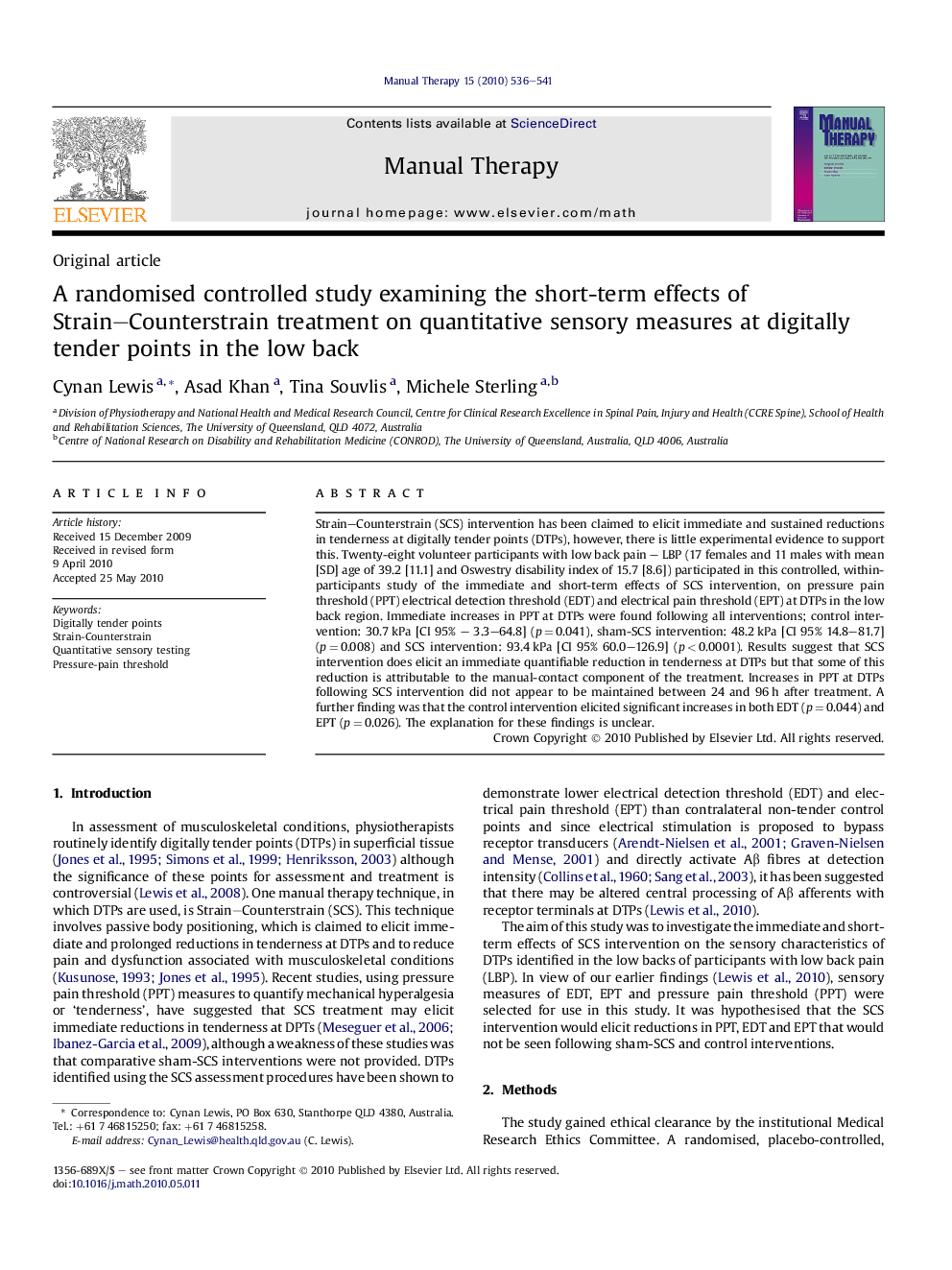| Article ID | Journal | Published Year | Pages | File Type |
|---|---|---|---|---|
| 2625559 | Manual Therapy | 2010 | 6 Pages |
Strain–Counterstrain (SCS) intervention has been claimed to elicit immediate and sustained reductions in tenderness at digitally tender points (DTPs), however, there is little experimental evidence to support this. Twenty-eight volunteer participants with low back pain – LBP (17 females and 11 males with mean [SD] age of 39.2 [11.1] and Oswestry disability index of 15.7 [8.6]) participated in this controlled, within-participants study of the immediate and short-term effects of SCS intervention, on pressure pain threshold (PPT) electrical detection threshold (EDT) and electrical pain threshold (EPT) at DTPs in the low back region. Immediate increases in PPT at DTPs were found following all interventions; control intervention: 30.7 kPa [CI 95% – 3.3–64.8] (p = 0.041), sham-SCS intervention: 48.2 kPa [CI 95% 14.8–81.7] (p = 0.008) and SCS intervention: 93.4 kPa [CI 95% 60.0–126.9] (p < 0.0001). Results suggest that SCS intervention does elicit an immediate quantifiable reduction in tenderness at DTPs but that some of this reduction is attributable to the manual-contact component of the treatment. Increases in PPT at DTPs following SCS intervention did not appear to be maintained between 24 and 96 h after treatment. A further finding was that the control intervention elicited significant increases in both EDT (p = 0.044) and EPT (p = 0.026). The explanation for these findings is unclear.
